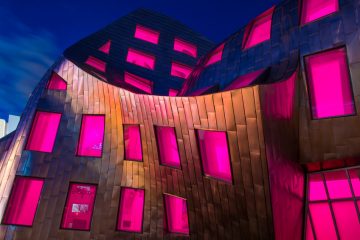
Real success and ongoing progress require a mix of constructive indignation and creative insecurity. It’s more than metrics. It’s how you approach metrics – what’s part of your heart goals, not just what’s part of your SMART goals (specific, measurable, achievable, realistic, timely).
As an adjunct professor in Baylor’s Hankamer School of Business MBA program, I get to learn, not just teach. Though my course has Health IT as a primary theme, the real goal is to talk about leadership using IT as an enabler to engage class members. In conversations and interviews, our classes often talk about success. When I’m not working as a professor, but as a CIO for an organization or HIT advisor to a client, I often get involved with or lead projects and engagements. Regardless of the project or engagement, people frequently ask, “How will you measure success?” The answers in all venues – whether university or business-based – are as diverse as the audiences with whom I interact.
People most often identify success using a quantifiable metric. Some metrics are based on GPAs, particularly for students; some, on where you rank in a poll; some, on the score of a game – particularly important during Superbowl season; often, based on time and money, i.e., a date and dollar figure. There are clear and pragmatic reasons for these metrics. Developing a shared vision of success encourages dialog, provokes thought, improves communication, and can become the basis of social and/or legal contracts.
Success, however, is not enough. Success without progress will eventually, often sooner than you want, turn stale – leave you in the past. That’s why you must live in the present and prepare for the future. Progress demands it. So, what are the necessary elements for progress?
When I was teaching in the CHIME Boot Camp for CIOs or those exploring what it takes to become a CIO, the faculty would inevitably get the questions, “What do you think makes you successful?” and “What does it take to be a good leader?” My answer was always the same. I owe any success first to my family, friends, and then to the people with whom I worked. The personality trait, however, that helped me the most was not talent. It was a sense of constructive indignation. When I was given a task, particularly a repetitive one, I would constantly challenge myself to find a better way to do it. It didn’t matter if it was sweeping the driveway which my father thought was a great chore for a teenage boy, packing the trunk of a car, or following any number of business processes, I was in an eternal search for a better approach. I’m still like that.
The January 20, 2022 broadcast of 60 Minutes on CBS featured a story about Frank Gehry, inarguably one of the most important architects on the globe. The reporter interviewing him asked what he saw when he looked at his buildings. To paraphrase, he said he could see ways to improve what he’s done. I was inspired by that interview to write this blog. That response summarizes my view of constructive indignation. Regardless of what has been done, there is a way that it could be done better. That’s a healthy combination of frustration, humility, and optimism. In addition, he credited much of his success to “creative insecurity.” Creative insecurity is not something to be avoided but to be embraced. It may seem counterintuitive, but the best time to change is when you’ve achieved success. Your willingness to recognize but not settle for success will help you find the way to a better future – to progress.
